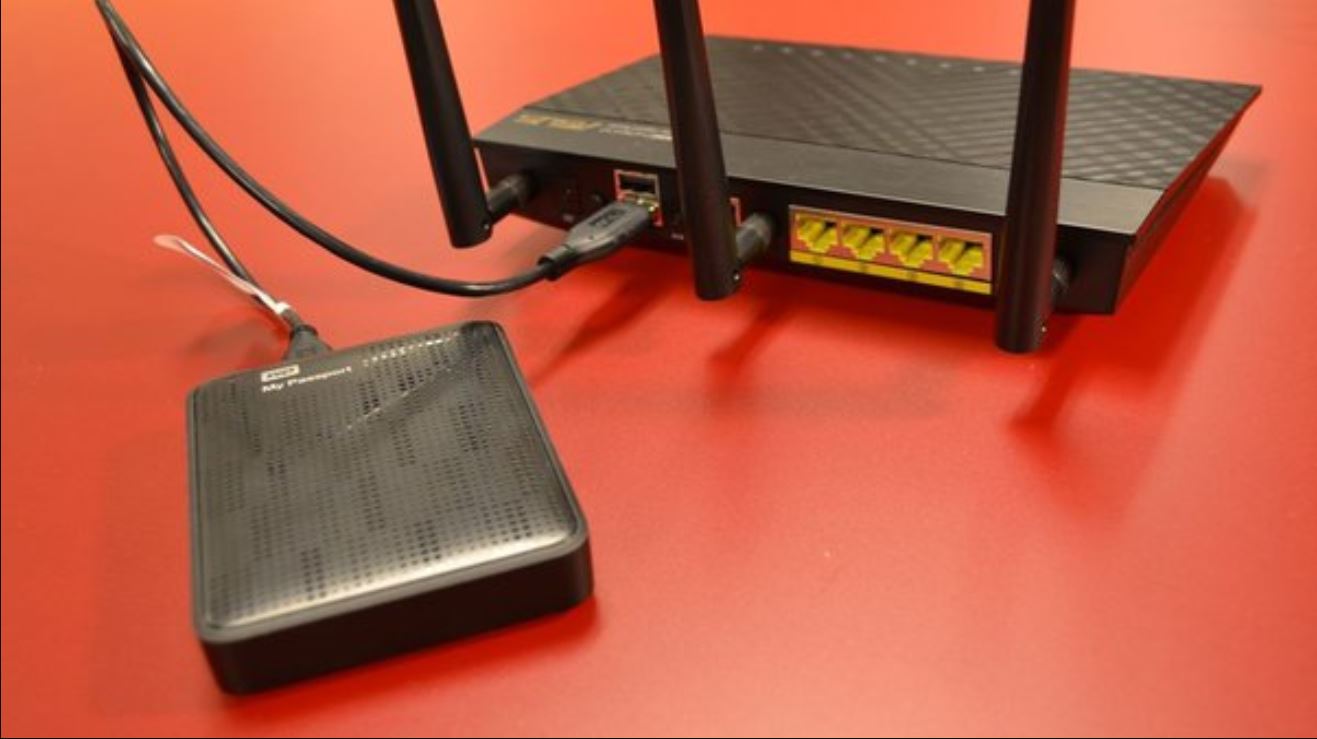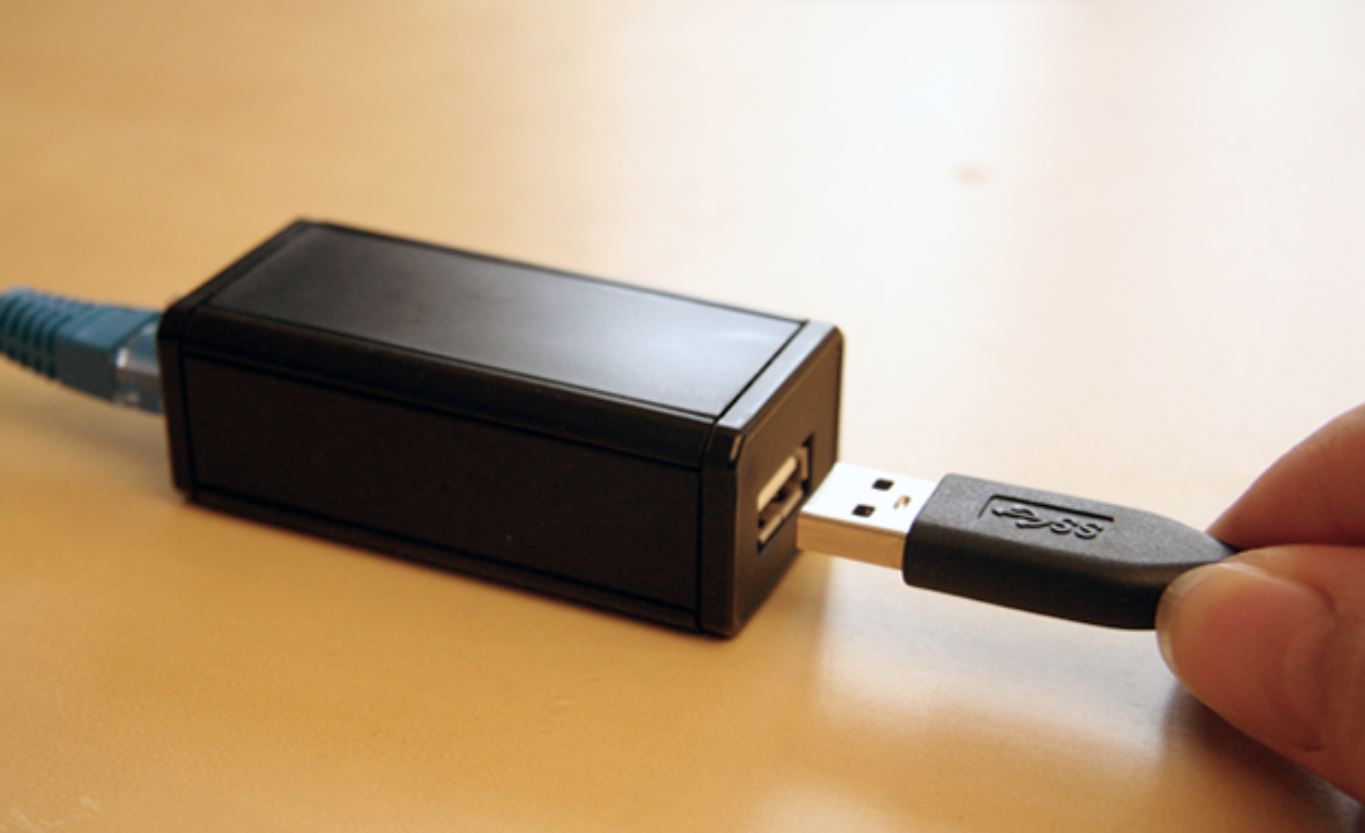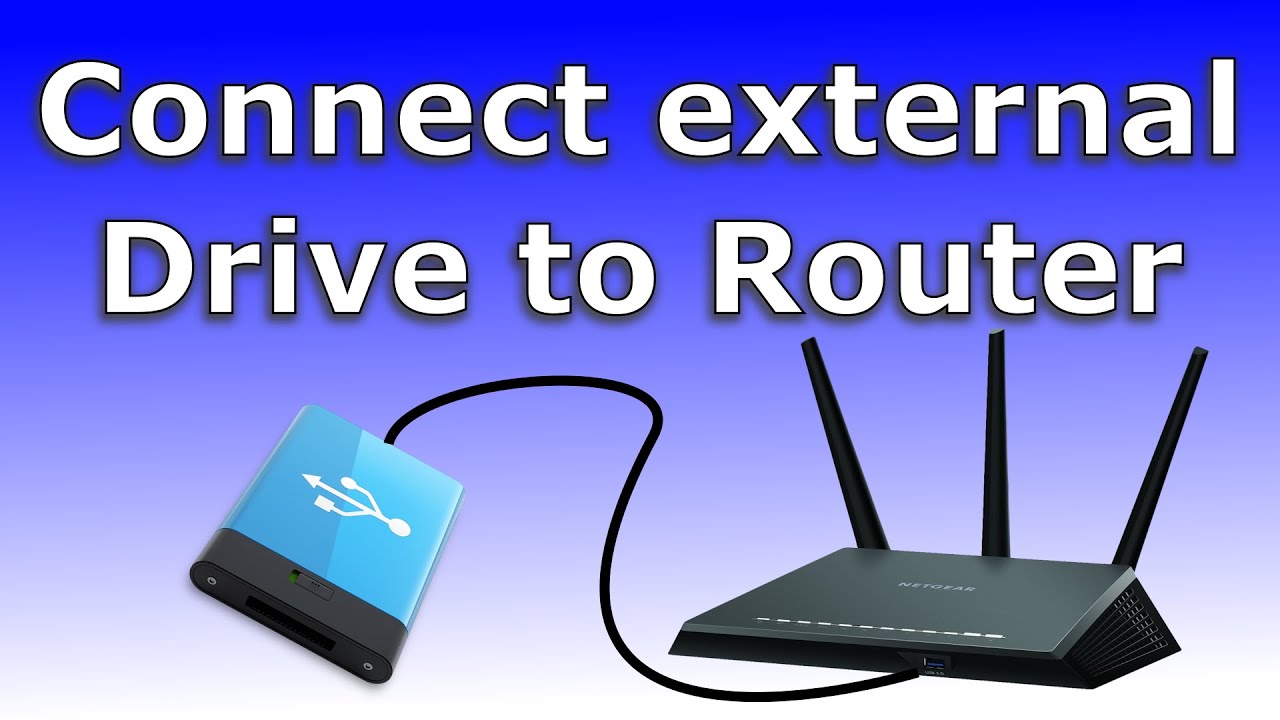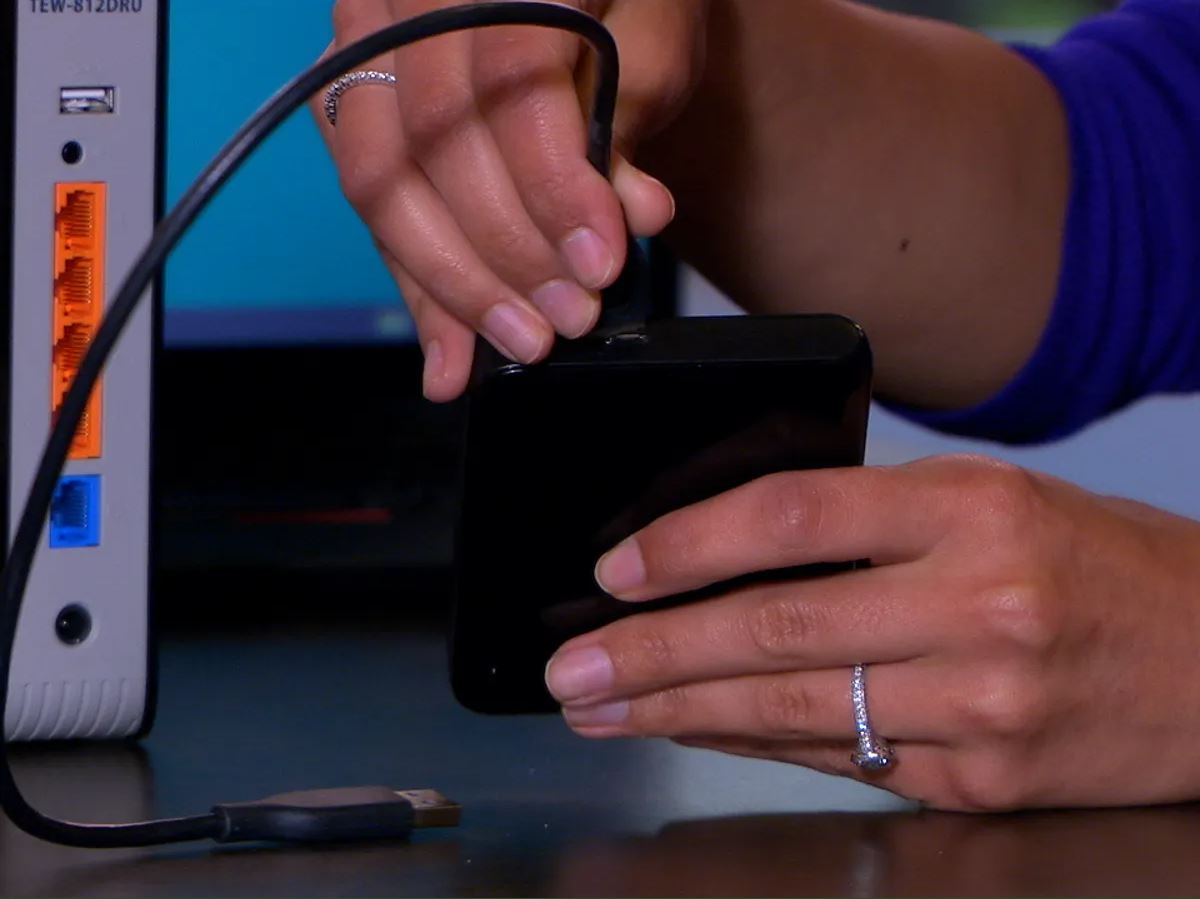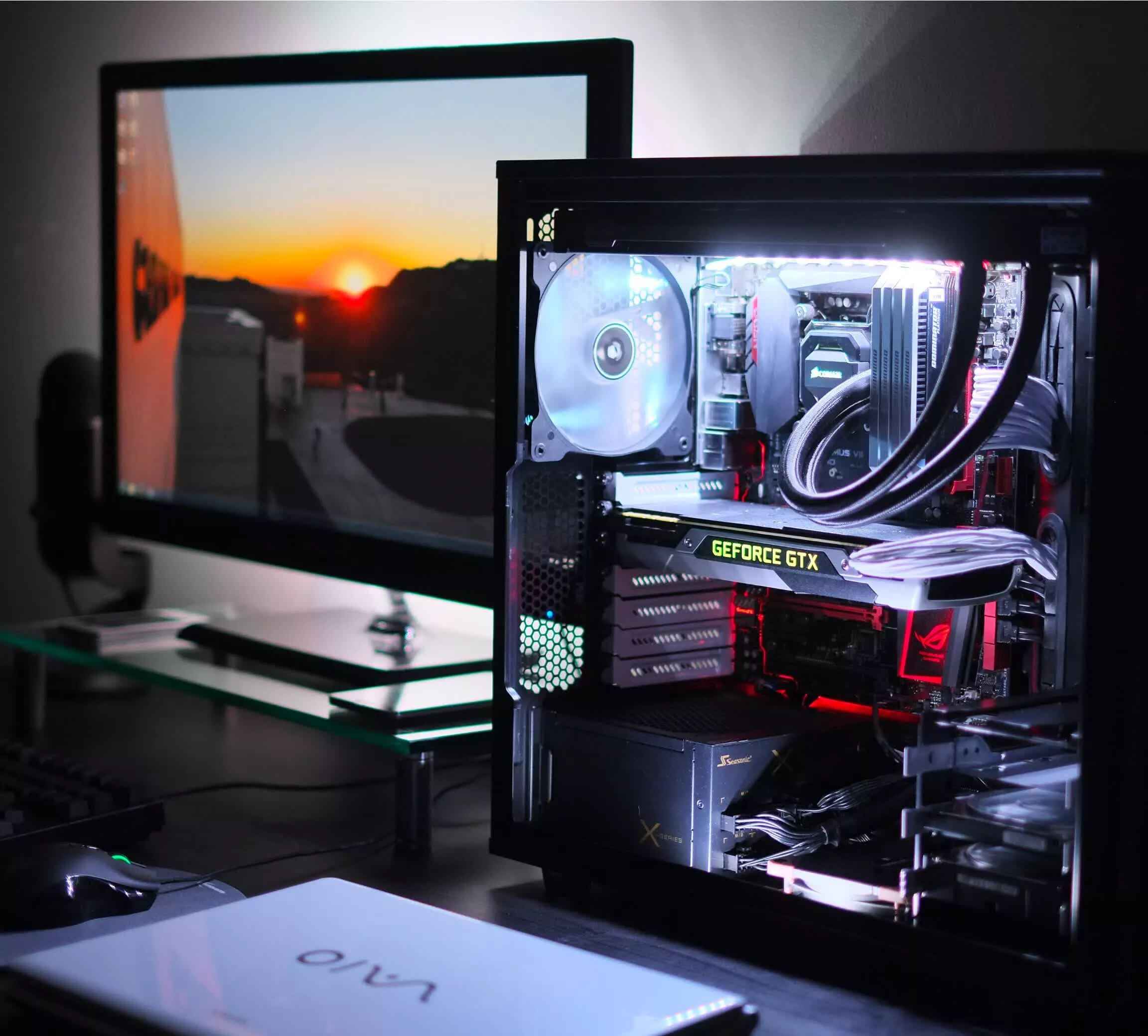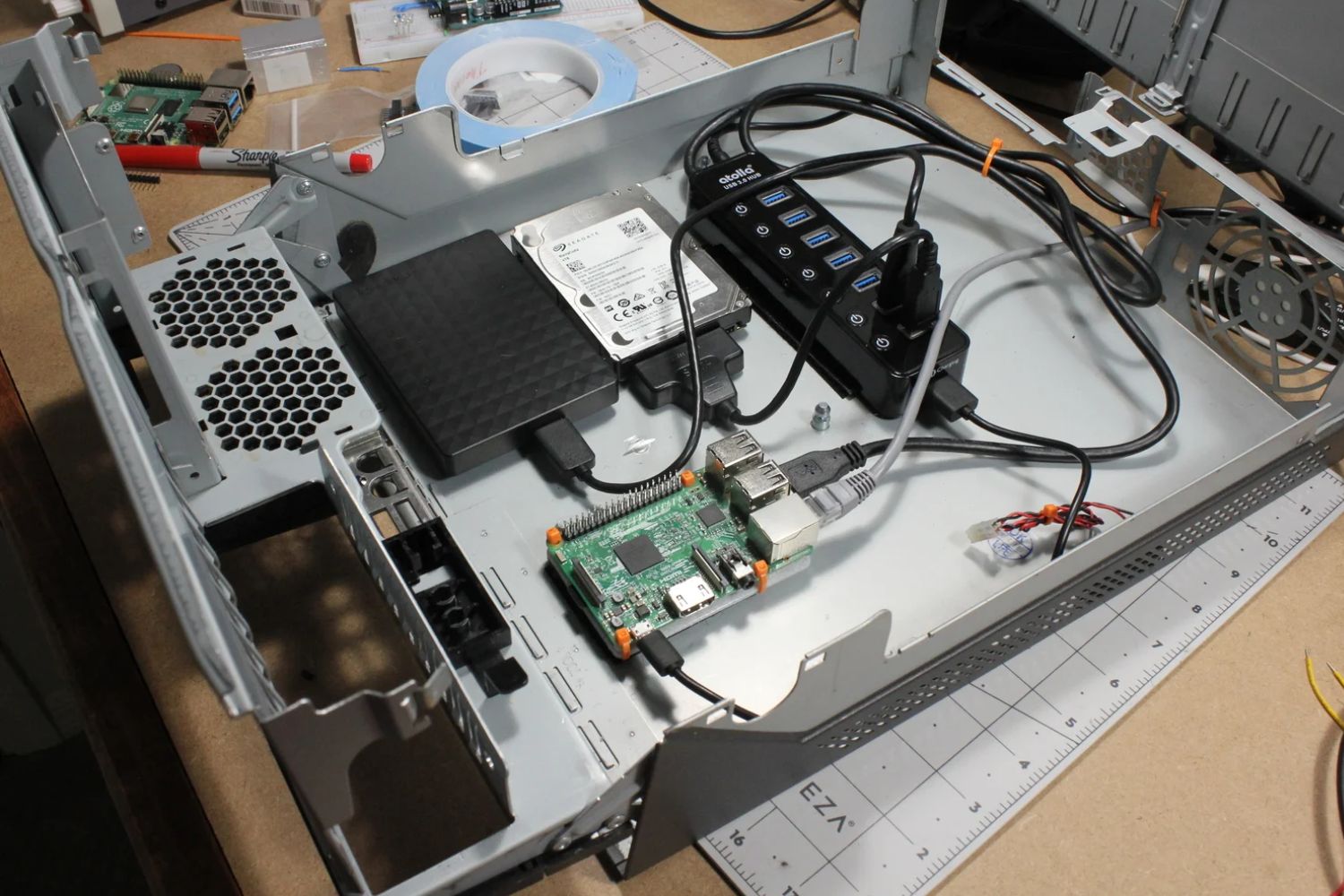Introduction
Connecting an external hard drive to your router can be a game-changer when it comes to your home network. By doing so, you can easily access and share files with multiple devices, including computers, smartphones, and tablets, without the need for physical transfers or cloud storage services. Whether you want to stream media, backup important files, or create a centralized file storage solution for your home, connecting an external hard drive to your router opens up a world of possibilities.
This article will guide you through the process of connecting an external hard drive to your router and setting up file sharing. We’ll also explore the benefits of this setup and provide troubleshooting tips to help you overcome any potential challenges along the way.
Before we dive into the steps, let’s take a look at some of the key advantages of connecting an external hard drive to your router:
- Easy file access: Once connected, you can access your files from any device connected to the same network, eliminating the need for physical transfers or cloud syncing.
- Centralized storage: With a connected external hard drive, you can create a centralized storage solution for your home, making it easy to access and share files across multiple devices.
- Stream media: If you have movies, music, or other media stored on your external hard drive, connecting it to your router allows you to stream content to your smart TV, gaming console, or other devices.
- Backup solution: Using your router’s built-in backup capabilities, you can automatically back up important files from your devices to the connected external hard drive, ensuring you have a reliable backup solution in place.
- Expand storage capacity: If you’re running out of space on your devices, connecting an external hard drive to your router gives you extra storage capacity without the need to upgrade or replace existing hard drives.
Now that you understand the benefits, let’s move on to the next section, where we’ll discuss the things you’ll need to set up your external hard drive with your router.
Benefits of Connecting External Hard Drive to Router
Connecting an external hard drive to your router offers numerous advantages that can greatly improve your home network experience. Let’s delve into some of the main benefits of this setup:
- Easy File Sharing: By connecting an external hard drive to your router, you can easily share files with other devices on your network. This means you can access important documents, photos, videos, and other files from any device connected to your network without the need for physical transfers or cloud storage services.
- Centralized Storage: With a connected external hard drive, you can create a centralized storage solution for your home. This allows you to store all your files in one place, making it convenient to access and manage them from any device. Whether it’s documents, media files, or personal backups, having a centralized storage system simplifies file organization and reduces the risk of data loss.
- Media Streaming: With an external hard drive connected to your router, you can easily stream media content to other devices in your home. Whether it’s watching movies on your smart TV, listening to music via a compatible audio system, or viewing photos on your tablet, the connected external hard drive becomes a hub for accessing and streaming media throughout your home.
- Backup and Data Protection: Utilizing your router’s backup features, you can automatically back up your important files and data to the external hard drive. This provides an additional layer of protection against data loss in case of device failure or accidental deletion. Regular backups help safeguard your files and give you peace of mind knowing that your valuable data is securely stored.
- Expand Storage Capacity: As files and media accumulate on your devices, storage space may become limited. Connecting an external hard drive to your router allows you to expand your overall storage capacity without having to upgrade or replace individual device storage. This is particularly useful for devices with fixed storage like smartphones or laptops.
- Multi-Device Access: With an external hard drive connected to your router, you can access and share files across multiple devices simultaneously. Whether it’s collaborating on documents with colleagues, sharing family photos with relatives, or syncing files between your computer and mobile devices, the connected external hard drive ensures seamless access and sharing across all your devices.
These benefits make connecting an external hard drive to your router a worthwhile investment. Not only does it simplify file management and sharing, but it also enhances data security and expands your overall storage capacity. In the next section, we’ll cover the things you’ll need to set up your external hard drive with your router.
Things You’ll Need
Before you can connect an external hard drive to your router, there are a few items you’ll need to gather. Here’s a list of the essential things you’ll need for a successful setup:
- External Hard Drive: Choose an external hard drive with sufficient storage capacity to suit your needs. Consider factors like data transfer speeds, compatibility, and reliability when making your selection. It’s recommended to opt for a USB 3.0 compatible drive for optimal performance.
- Router with USB Ports: Check if your router has USB ports available for connecting the external hard drive. Most modern routers come with USB 2.0 or USB 3.0 ports that enable you to connect external storage devices. Refer to your router’s user manual or manufacturer’s website to confirm the presence of USB ports.
- USB Cable: Ensure you have a USB cable compatible with your external hard drive. This cable is used to establish a connection between the hard drive and your router. Check the cable type and length to ensure it will reach from your router to your selected location for the external hard drive.
- Power Adapter (If Required): Some external hard drives require an additional power source, while others draw power through the USB cable. Check the power requirements of your external hard drive and, if necessary, ensure you have the appropriate power adapter to connect it to an electrical outlet.
- Network Devices: Make sure you have the necessary network devices, such as Ethernet cables or Wi-Fi connections, to establish a network connection between your devices and the router. This is essential for accessing the external hard drive and sharing files across your network.
- Device with File Access: You’ll need a device capable of accessing the shared files on the external hard drive. This can be a computer, laptop, smartphone, or tablet. Ensure that the device is connected to the same network as the router to be able to access the shared files.
By having these items ready, you’ll be well-prepared to connect an external hard drive to your router and enjoy the benefits of expanded storage and easy file sharing. In the next section, we’ll walk you through the step-by-step process of connecting the hard drive to your router.
Step 1: Check Router Compatibility
Before connecting your external hard drive to your router, it’s important to ensure that your router supports this functionality. Here’s how you can check the compatibility:
1. Check the Manual or Manufacturer’s Website: Refer to your router’s user manual or visit the manufacturer’s website to find information about USB connectivity and external storage support. Look for specifications or features related to USB ports and external hard drive compatibility. This will confirm if your router has the necessary hardware and software to support connecting an external hard drive.
2. USB Port Types: Determine the type of USB ports available on your router. Most modern routers have USB 2.0 or USB 3.0 ports. USB 3.0 ports offer faster data transfer speeds, so if your router has USB 3.0 ports, it’s recommended to use them for optimal performance.
3. Firmware Updates: Check if there are any firmware updates available for your router. Firmware updates often include bug fixes and new features, including improved support for external storage devices. Updating your router’s firmware can enhance the compatibility and functionality necessary to connect an external hard drive.
4. Online Forums and Community Support: Visit online forums or community websites dedicated to your router brand or model. These forums often have discussions and guides related to connecting external hard drives to specific routers. You can find valuable information, user experiences, and troubleshooting tips from the community.
Keep in mind that not all routers support connecting external hard drives or may have limitations on the supported storage capacity or file systems. So, it’s essential to verify compatibility with your specific router model to avoid any compatibility issues or unexpected limitations.
Once you’ve confirmed that your router supports connecting an external hard drive, you can proceed to the next step: physically connecting the hard drive to your router. We’ll cover this in detail in the upcoming section.
Step 2: Connect the Hard Drive to Your Router
Now that you’ve confirmed that your router is compatible with connecting an external hard drive, it’s time to establish the physical connection between the two. Follow these steps to connect your hard drive to your router:
- Locate the USB Ports: Identify the USB ports on your router. They are usually located on the back or side of the router and may be labeled as “USB” or have a symbol indicating their purpose.
- Connect the Hard Drive: Take the USB cable that came with your external hard drive and plug one end into the USB port on the hard drive itself. Then, plug the other end into one of the available USB ports on your router.
- Power on the Hard Drive (if applicable): If your external hard drive requires a separate power source, ensure that it is properly connected and turned on.
- Allow Time for Recognition: Give your router and the external hard drive a few moments to recognize each other. The router will detect the presence of the hard drive and configure the necessary settings to enable file sharing.
- Check Router Admin Panel: To verify that the hard drive has been successfully connected, log in to your router’s admin panel. You can access it by entering the router’s IP address in a web browser. Look for a section related to USB devices or external storage. Here, you should see the connected hard drive listed, along with its storage capacity.
Once the hard drive is connected and recognized by your router, you’re ready to proceed to the next step: setting up file sharing. We’ll cover this process in the upcoming section, so stay tuned!
Step 3: Set Up File Sharing
Now that your external hard drive is connected to your router, it’s time to set up file sharing so that you can access and transfer files effortlessly. Follow these steps to enable file sharing:
- Access the Router’s Admin Panel: Open a web browser on a device connected to the same network as your router. Enter the router’s IP address in the browser’s address bar and press Enter. This will take you to the router’s admin panel.
- Enter Router Login Credentials: If prompted, enter your router’s login credentials. This information is usually found in the router’s user manual or on a label attached to the device. If you’ve changed the login information before, use the updated credentials.
- Navigate to the USB Devices or Storage Settings: Once in the router’s admin panel, navigate to the section related to USB devices, external storage, or file sharing. The exact location and labeling of this section may vary depending on your router’s make and model.
- Enable File Sharing: In the USB devices or storage settings section, look for an option to enable file sharing or network sharing. Enable this option to allow other devices on the network to access the files stored on the external hard drive.
- Configure Access Permissions: Some routers offer the ability to set access permissions for different devices or users. If desired, configure access permissions to control who can access and modify the files on the external hard drive. You can usually assign read-only or read-write permissions to specific devices or users.
- Save Settings: Once you’ve made the necessary changes and configurations, save the settings in the router’s admin panel. This will apply the changes and make the external hard drive available for file sharing on the network.
With file sharing enabled, you can now access and transfer files to and from the external hard drive using devices connected to the same network. In the next section, we’ll discuss how to access the external hard drive on different devices.
Step 4: Accessing the External Hard Drive
Now that you’ve set up file sharing on your router, it’s time to learn how to access the external hard drive and its files from different devices on your network. The process may vary slightly depending on the operating system and device you are using. Follow these general steps to access the external hard drive:
Windows:
- Open File Explorer: On your Windows device, open File Explorer by pressing the Windows key + E or by clicking the File Explorer icon in the taskbar.
- Network Section: In the left-hand sidebar of File Explorer, locate and click on the “Network” section. This will display all the devices available on your network.
- Router Name: Under the “Network” section, you should see the name of your router. Click on it to access the shared folders.
- External Hard Drive: Within the shared folders, you should see the external hard drive listed. Double-click on it to access its files and folders. You can now browse, open, and transfer files to and from the external hard drive using File Explorer.
Mac:
- Open Finder: On your Mac device, open Finder by clicking on its icon located in the Dock or by pressing Command + Spacebar to open Spotlight Search and typing “Finder.”
- Shared Section: In the Finder sidebar, click on “Network” under the “Shared” section. This will display all the devices available in your network.
- Router Name: Look for and click on the name of your router under the “Network” section. This will show any shared folders on your router.
- External Hard Drive: Within the shared folders, you should find the external hard drive listed. Double-click on it to access its files and folders. You can now view, open, and transfer files to and from the external hard drive using Finder.
Note that these steps are general guidelines, and the interface and navigation may differ slightly based on your operating system’s version and settings. If you encounter any issues during the access process, refer to your device’s documentation or consult online resources for specific instructions relevant to your setup.
In the next step, we’ll discuss how you can use the connected external hard drive for backups and file transfers. So, let’s move on!
Step 5: Backup and File Transfer
Now that you have access to the external hard drive, you can take advantage of its storage capacity for backups and file transfers. Here’s how you can utilize the connected external hard drive for these purposes:
Backup:
To use the external hard drive for backups, follow these steps:
- Select Files to Back Up: Identify the files or folders on your device that you want to back up. These can include documents, photos, videos, and other important files.
- Create Backup Schedule: Depending on your router, you may have the option to schedule automatic backups at specific intervals. Configure the backup schedule according to your preferences.
- Set Backup Destination: Specify the external hard drive connected to your router as the backup destination. This ensures that the selected files will be automatically backed up to the external hard drive during the scheduled backup times.
- Start the Backup: Initiate the backup process by either triggering an immediate backup or waiting for the scheduled backup time. The router will now copy the selected files onto the external hard drive, providing you with a reliable backup solution.
File Transfer:
To transfer files to and from the external hard drive, follow these steps:
- Locate the Files: Open the file manager or explorer on your device and navigate to the files or folders you want to transfer.
- Copy or Move: Right-click on the selected files or folders and choose “Copy” or “Cut” from the context menu, depending on whether you want to duplicate or move the files.
- Paste to the External Hard Drive: Navigate to the external hard drive location within the file manager or explorer, right-click in an empty space, and choose “Paste” to transfer the files to the external hard drive.
- Monitor the Transfer: Depending on the size and number of files being transferred, the process may take some time. Monitor the transfer progress to ensure all files are successfully copied or moved.
With these steps, you can conveniently back up important files and transfer data to and from the external hard drive connected to your router. Remember to regularly update your backups and organize your files for easy access and management.
Now that you’re familiar with the backup and file transfer process, we’re almost at the end of our guide. In the next section, we’ll provide you with some troubleshooting tips to help you overcome common challenges that may arise during the setup or use of an external hard drive with your router.
Troubleshooting Tips
While connecting an external hard drive to your router is generally a straightforward process, you may encounter some issues along the way. Here are some common troubleshooting tips to help you overcome potential challenges:
- Check Hardware Connections: Ensure that all cables and connections are secure. Sometimes, a loose or faulty connection can prevent the router from recognizing the external hard drive properly.
- Restart Router and Devices: Restarting your router and devices can often resolve connectivity issues. Power off the router and unplug it from the power source. Wait for a few seconds and then plug it back in. Also, restart the devices you’re trying to access the external hard drive from.
- Update Router Firmware: Check if there are any firmware updates available for your router. Outdated firmware can cause compatibility issues with external storage devices. Visit the manufacturer’s website for instructions on how to update your router’s firmware.
- Check Router Storage Settings: Verify that file sharing and access permissions are properly configured in your router’s settings. Ensure that the external hard drive is recognized and set to allow file sharing.
- Verify Network Connectivity: Double-check that all devices are connected to the same network and are within Wi-Fi range. In some cases, weak or unstable network connections can affect file access and transfer speed.
- Check File System Compatibility: Make sure that the file system format of the external hard drive is supported by your router. Some routers may have limitations or only support specific file system formats such as FAT32 or NTFS.
- Restart and Reset: If all else fails, try restarting your router one more time or perform a factory reset. However, keep in mind that a factory reset will erase all custom settings, so make sure to have a backup of important configuration details before proceeding.
- Consult Manufacturer Support: If you’ve tried all the troubleshooting tips and are still experiencing difficulties, reach out to the manufacturer’s customer support. They can provide additional guidance and assistance based on your specific router model.
By following these troubleshooting tips, you can resolve common issues that may arise when connecting an external hard drive to your router. Remember to be patient and thorough in your troubleshooting process.
Now that we’ve covered troubleshooting, let’s conclude our guide with some final thoughts on connecting an external hard drive to your router.
Final Thoughts
Connecting an external hard drive to your router opens up a world of possibilities for convenient file sharing, backup solutions, and expanded storage. By following the steps outlined in this guide, you can easily set up and access your external hard drive on multiple devices connected to your network.
The benefits of connecting an external hard drive to your router are immense. You can enjoy seamless file sharing, centralized storage, media streaming, data backup, and the ability to expand your storage capacity. It provides a convenient and efficient solution for accessing and managing files across various devices in your home.
Throughout the setup process, it’s essential to ensure router compatibility, establish physical connections correctly, configure file sharing settings, and troubleshoot any issues that may arise. By following the steps and troubleshooting tips provided in this guide, you can overcome potential challenges and make the most out of your connected external hard drive.
Remember to regularly back up your files, organize your stored data, and keep your router firmware updated to maintain optimal performance and data security.
Now that you have the knowledge to connect an external hard drive to your router, it’s time to take control of your network storage and enjoy the convenience and flexibility it brings. Whether it’s sharing files with family and friends, streaming media content, or backing up important data, the connected external hard drive will play a pivotal role in enhancing your home network experience.
Thank you for following this guide. We hope you found it helpful and that it has empowered you to connect and utilize your external hard drive with your router efficiently. Enjoy the benefits of seamless file access and storage within your home network!







